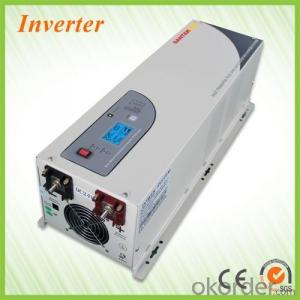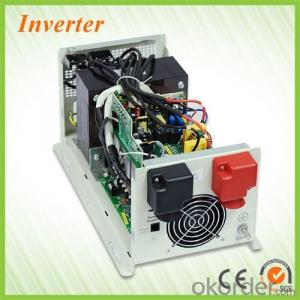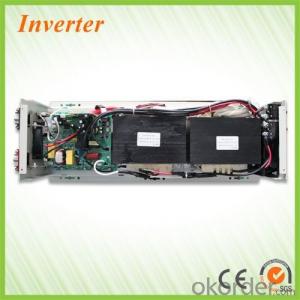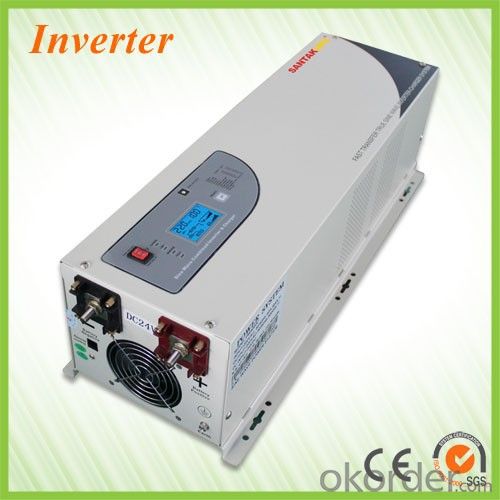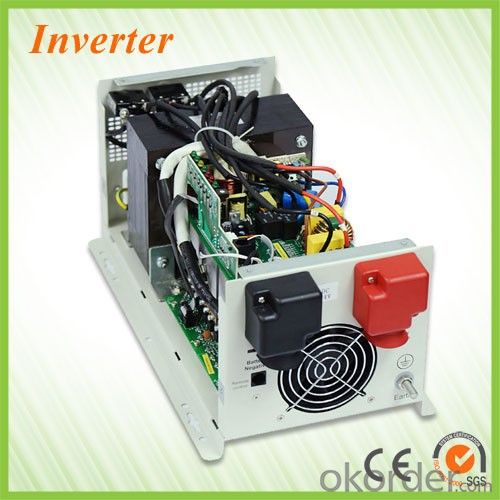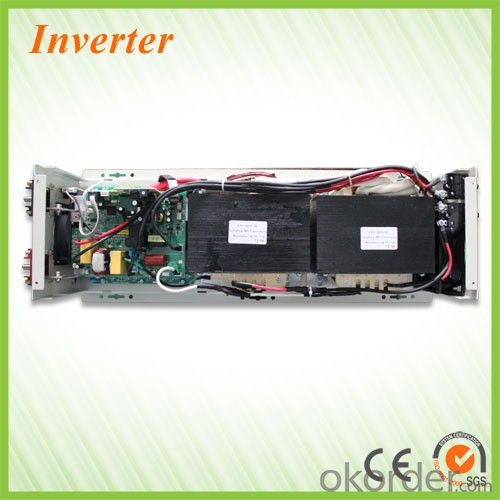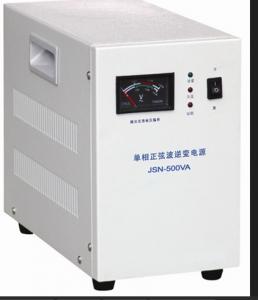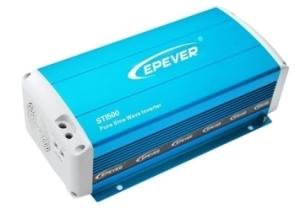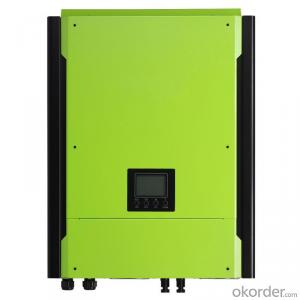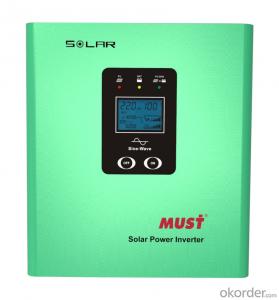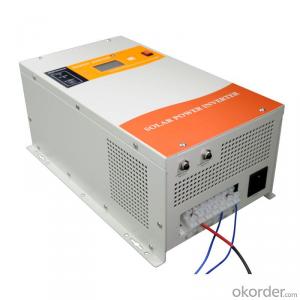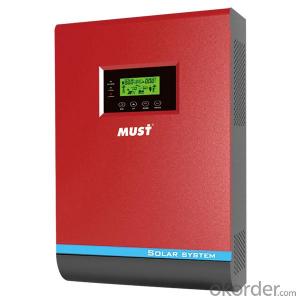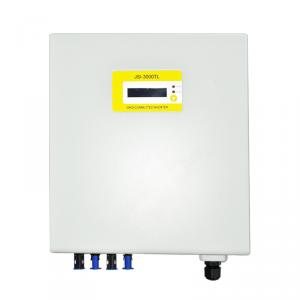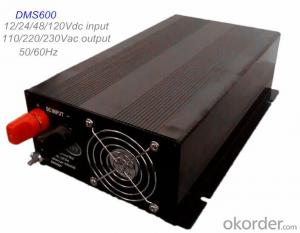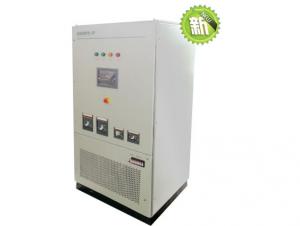2000W Solar Inverter - 2024 Top Selling South Africa EP 3000 48V 6000W Solar Charger Inverter
- Loading Port:
- Ningbo
- Payment Terms:
- TT OR LC
- Min Order Qty:
- 500 pc
- Supply Capability:
- 10000 pc/month
OKorder Service Pledge
OKorder Financial Service
You Might Also Like
2015 Top Selling South Africa EP 3000 48V 6000W Solar Charger Inverter
Features of EP3000 Series 48V 6000W Solar Charger Inverter :
High efficiency over 90%
12Vac/24Vac/48Vac
Max.charge current 70A
Inbuilt pure copper transformer
Automatic three-stage battery Charger
RS232 with free CD(option)
Solar first function(option)
Charge current adjustable(option)
Remote control(option)
CE certificate, Soncap certificate.
Product Picts of EP3000 Series 48V 6000W Solar Charger Inverter :
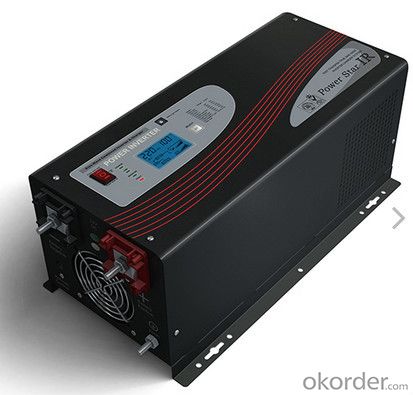
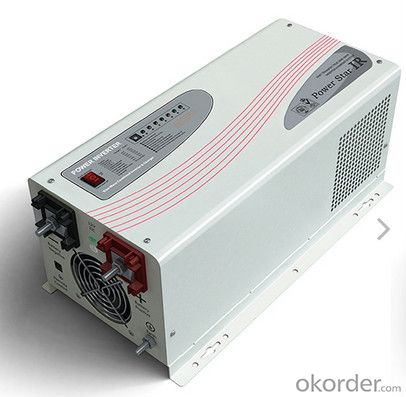
| Rated Capacity | 1000W | 1500W | 2000W | 3000W |
| Efficiency | >90% | |||
| Input | ||||
| Model | 120v Models | 230v Models | ||
| Nominal Voltage | 100V/110V/115V/120V Selectable | 200V/220V/230V/240V Selectable | ||
| Output | ||||
| Rated Power | 1000W | 1500W | 2000W | 3000W |
| Output Voltage | 100V/110V/115V/120V Selectable | 200V/220V/230V/240V Selectable | ||
| Voltage Waveform | Pure Sine Wave | |||
| Crest Factor | 3:1 | |||
| Regulation(Nominal) | ±10% Typical Of Nominal Voltage | |||
| Transfer Time | Transfer Time : AC To DC : 10ms (Typical) Transfer Time : DC To AC : 10ms(Typical ) | |||
| Max Bypass Overload Current | 30A | |||
| Input | ||||
| Nominal Voltage | DC12V/24V | DC12V/24V | DC12V/24V | DC24V/48V |
| Over Current Protection | By Re-Settable Over Current Protector | |||
| Output | ||||
| Nominal Input Voltage | 230Vac | |||
| Input Voltage Range | 185~265Vac | |||
| Nominal Charge Current | 35amp-70amp | |||
| Charger Short Circuit Protection | Circuit Breaker | |||
| Over Charge Protection | Bat. V ≥ 15.7Vdc/31.4Vdc/62.8Vdc Beeps 0.5s Every 1s & Fault After 60s | |||
| Battery Type | Lead-Acid 12Ah ~ 250Ah | |||
| Typical Backup Time | No Limit, Depend on external battery | |||
| Average Charging Current | 35A/20A | 45A/30A | 65A/35A | 75A/30A |
| Battery voltage Option | ||||
| Options 7 | Battery low trip to bypass 11v , high trip to battery 14v | |||
| Options 8 | Battery low trip to bypass 10.5v , high trip to battery 13.5v | |||
| Options 9 | Battery low trip to bypass 10v , high trip to battery 13v | |||
| Communications & Management | ||||
| Control Panel | LCD/LED Option | |||
| Audible Alarm | Alarm On Battery:Low Battery & Battery Over Voltage Alarm On Abnormal Operation: Over Load, Short-Circuit, & Over Heat | |||
| Environment and Safe | ||||
| Operating Temperature | 0℃ To 40℃ (32℉ To 104℉) | |||
| Transit/Storage Temperature | -15℃ To 60℃ | |||
| Audible Noise | 60 Dba Max at 1m | |||
| Quality Control System | ISO 9001,CE,FCC | |||
| Physical | ||||
| Dimensions: (H×D×W) | 570*320*315mm | |||
| G.W (Kg) | 19 | 19 | 22.5 | 27.5 |
| Packing | Export Carton For Each Unit Per Carton | |||
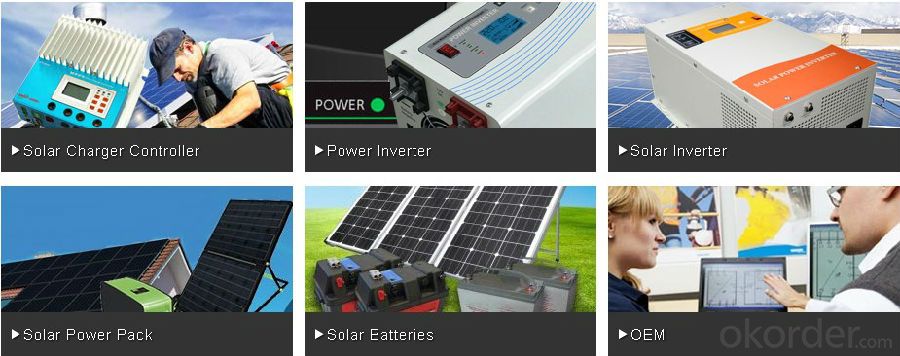
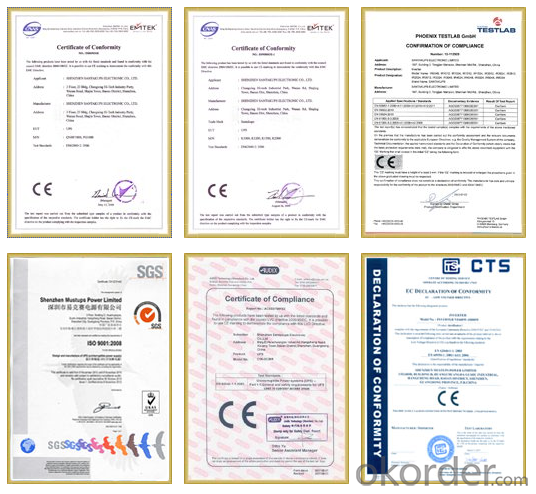
Warrenty
provides a 1~3 year limited warranty (“Warranty”) against defects in materials and workmanship for its Uninterruptible power supply, Power inverter/chargers, Solar charge controllers, Battery Products (“Product”).
The term of this Warranty begins on the Product(s) initial purchase date, or the date of receipt of the Product(s) by the end user, whichever is later. This must be indicated on the invoice, bill of sale, and/or warranty registration card submitted to MUST-Solar. This Warranty applies to the original MUST-Solar Product purchaser, and is transferable only if the Product remains installed in the original use location.
FAQ
1. How do I decide which system is right for me ?
For protection from long outages, include a generator or solar panels in your Must solar system. Shorter outages can be handled by a battery-only system.
2. Where my system will be installed ?
Must solar systems are usually wall-mounted near a home's main electrical (circuit breaker) panel.
3. How do I install my system ?
A must solar backup inverter is connected to a home electric system , we will supply detailed installation manual and videos for our customers .
4. How fast will my system respond to a power outage ?
Must solar inverters typically transfer to battery power in less than 16 milliseconds (less than 1/50th of a second).
- Q: Can a solar inverter be used with a solar-powered greenhouse system?
- Yes, a solar inverter can be used with a solar-powered greenhouse system. A solar inverter converts the direct current (DC) generated by solar panels into alternating current (AC) that can be used to power electrical devices in the greenhouse system. This allows for efficient utilization of solar energy for various applications such as lighting, ventilation, irrigation, and temperature control within the greenhouse.
- Q: Can a solar inverter be used with a solar-powered educational system?
- Yes, a solar inverter can be used with a solar-powered educational system. A solar inverter is a device that converts the direct current (DC) generated by solar panels into alternating current (AC) that can be used to power various electrical devices. In the case of a solar-powered educational system, the solar inverter would play a crucial role in converting the DC power generated by the solar panels into usable AC power for running electronic equipment such as computers, projectors, and other educational tools.
- Q: How does the weight of a solar inverter affect its installation process?
- The weight of a solar inverter can significantly impact its installation process. Heavier inverters may require additional support structures or mounting equipment to ensure proper installation and stability. They may also require more manpower and specialized equipment during the installation process. Conversely, lighter inverters may be easier to handle and install, potentially reducing installation time and effort. Therefore, the weight of a solar inverter is an important consideration that can influence the overall installation process.
- Q: How does a solar inverter handle voltage fluctuations from the solar panels?
- A solar inverter handles voltage fluctuations from the solar panels by continuously monitoring the incoming voltage and adjusting its own output voltage accordingly. It employs a control mechanism that stabilizes the voltage to ensure compatibility with the utility grid or the connected appliances. This enables the solar inverter to efficiently convert the variable DC voltage from the solar panels into a stable AC voltage, maintaining a consistent and reliable power supply.
- Q: How does a solar inverter handle voltage and frequency variations caused by voltage sags and swells?
- Voltage and frequency variations caused by voltage sags and swells are effectively managed by the diverse mechanisms equipped in a solar inverter. When there is a voltage sag or swell in the electrical grid, the solar inverter employs a technique known as Maximum Power Point Tracking (MPPT) to regulate the power output from the solar panels. During a voltage sag, where the grid voltage drops below the standard level, the solar inverter adjusts its MPPT algorithms to ensure that the solar panels continue operating at their maximum power point. This guarantees that the inverter extracts the most available power from the panels and compensates for the reduced grid voltage. By dynamically adjusting the operating point of the panels, the inverter mitigates the effects of the voltage sag and maintains an optimal power output. Similarly, in the case of a voltage swell, where the grid voltage exceeds the normal level, the solar inverter once again utilizes its MPPT capabilities to regulate power output. It adjusts the panels' operating point to prevent them from surpassing their rated voltage, thereby safeguarding them from potential damage. This allows the inverter to effectively handle the increased grid voltage and prevent any negative impact on the solar panels. Aside from voltage regulation, a solar inverter also addresses frequency variations caused by voltage sags and swells. It is designed to synchronize with the grid frequency and uphold a stable output frequency. When the grid frequency deviates from the normal range, the inverter adapts its internal control systems to match the grid frequency. This synchronization ensures that the power output from the inverter aligns with the grid requirements, facilitating seamless integration of solar energy into the electrical system. In conclusion, a solar inverter effectively manages voltage and frequency variations caused by voltage sags and swells by utilizing MPPT algorithms, voltage regulation mechanisms, and frequency synchronization capabilities. These features enable the inverter to adapt to changing grid conditions, maximize power extraction from the solar panels, and maintain a stable and reliable power output.
- Q: What is the role of a solar inverter in grid management and stability?
- Solar inverters have a crucial role to play in the management and stability of the electrical grid when it comes to integrating solar power. They are responsible for converting the direct current electricity produced by solar panels into alternating current electricity that can be used by homes and businesses or fed back into the grid. When it comes to managing the grid, solar inverters are vital for maintaining its stability and reliability. They perform important functions such as voltage regulation, frequency control, and compensating for reactive power. By monitoring the grid conditions and adjusting the solar power output accordingly, inverters help to balance the supply and demand of electricity in real-time, ensuring grid stability. In addition to grid management, solar inverters also contribute to grid stability by improving the quality of power. They actively filter out harmonics, voltage fluctuations, and other electrical disturbances that can be caused by the intermittent nature of solar power generation. This ensures that the electricity generated by solar panels is of high quality and does not introduce any disruptions or damage to the electrical grid. Furthermore, solar inverters enable the seamless integration of solar power into the grid by allowing excess energy to be fed back into the system. This is known as net metering or feed-in tariff programs, which provide compensation for solar energy producers for the surplus electricity they produce. With the help of inverters, the generated solar energy can be efficiently transferred to the grid, reducing the reliance on traditional fossil fuel-based power generation and promoting renewable energy integration. In summary, the role of a solar inverter in grid management and stability is to ensure the smooth integration and optimal utilization of solar power while maintaining the stability, reliability, and quality of the electrical grid. It acts as a bridge between solar energy producers and the grid, facilitating the efficient and sustainable integration of renewable energy sources into the existing power infrastructure.
- Q: What is the role of voltage support in a solar inverter?
- The role of voltage support in a solar inverter is to regulate and stabilize the voltage levels within the solar power system. It ensures that the voltage output from the solar panels matches the voltage requirements of the connected devices or the grid. By maintaining a consistent voltage, it helps to prevent overvoltage or undervoltage situations, which could damage the equipment or disrupt the power supply. Voltage support also helps to enhance the overall efficiency and reliability of the solar power system.
- Q: What is the role of a solar inverter in a solar-powered remote monitoring system?
- The role of a solar inverter in a solar-powered remote monitoring system is to convert the direct current (DC) electricity generated by the solar panels into alternating current (AC) electricity that can be used to power the monitoring system. It also ensures that the electricity generated matches the requirements of the monitoring equipment, regulates the voltage, and assists in efficient power transmission and distribution.
- Q: Can a solar inverter be used in mobile applications?
- Yes, a solar inverter can be used in mobile applications. Portable solar inverters are designed specifically for mobile use and are commonly used in recreational vehicles, boats, camping, and other off-grid applications. These inverters convert the direct current (DC) generated by solar panels into alternating current (AC) to power mobile devices and appliances.
- Q: How does a solar inverter affect the overall system reliability?
- A solar inverter plays a crucial role in the overall system reliability of a solar power system. It converts the direct current (DC) generated by solar panels into alternating current (AC) that can be used to power homes or be fed back into the grid. By ensuring efficient and reliable conversion, a solar inverter helps optimize the system's performance and stability. It also incorporates various protection features like over-voltage and over-current protection to safeguard the system from potential damage. Therefore, a high-quality and well-maintained solar inverter positively impacts the overall reliability of the solar power system.
Send your message to us
2000W Solar Inverter - 2024 Top Selling South Africa EP 3000 48V 6000W Solar Charger Inverter
- Loading Port:
- Ningbo
- Payment Terms:
- TT OR LC
- Min Order Qty:
- 500 pc
- Supply Capability:
- 10000 pc/month
OKorder Service Pledge
OKorder Financial Service
Similar products
Hot products
Hot Searches
Related keywords
